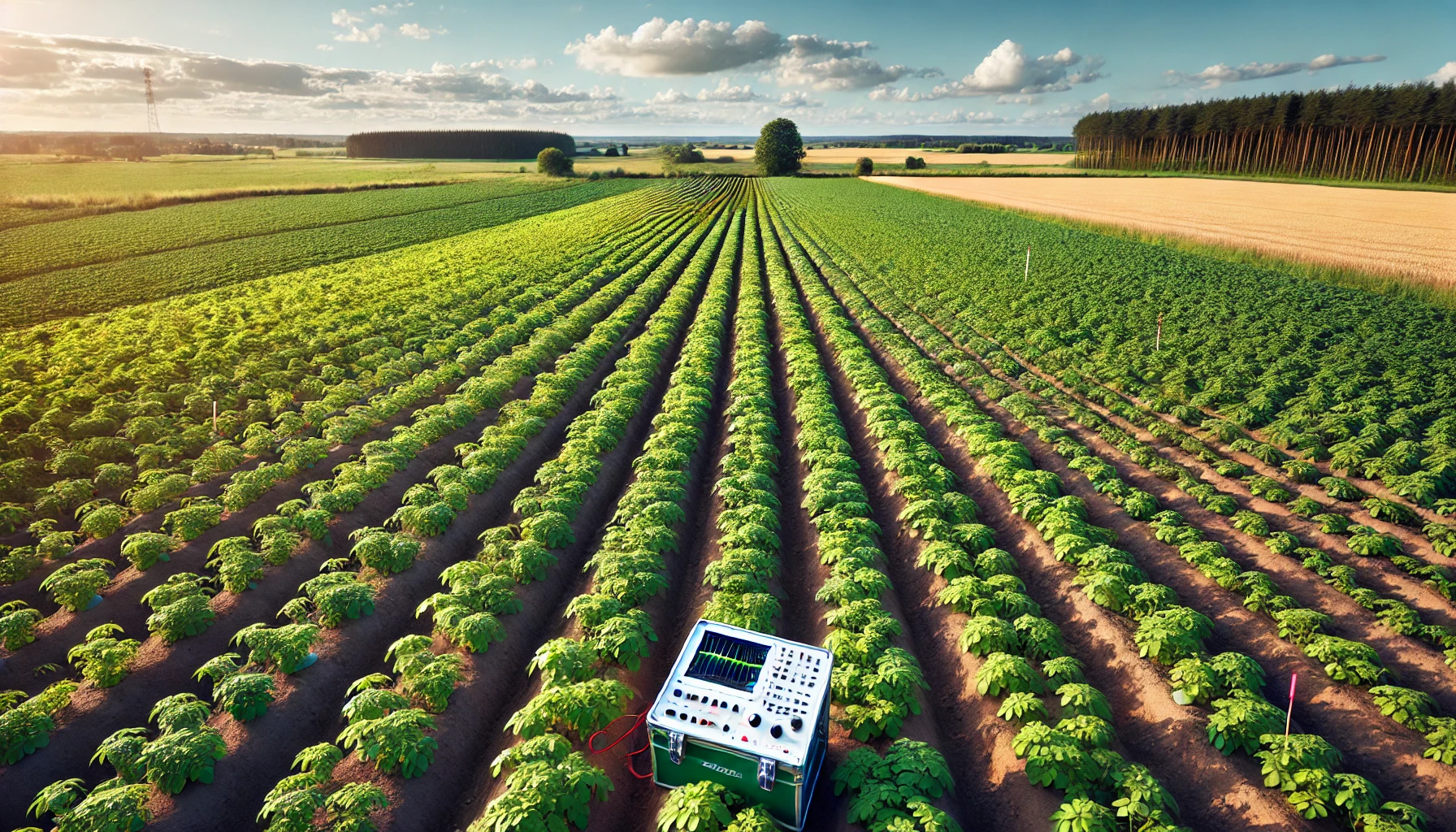Sustainable Farming Breakthrough: Ultrasound Technology Increases Potato Yields Efficiently
A study by Polish researchers demonstrated that using ultrasound treatments in potato cultivation significantly increased tuber yields and promoted sustainable farming practices. The technology offers a promising eco-friendly alternative to chemical treatments, enhancing nutrient absorption and overall plant growth.

In recent advancements in agricultural technology, the application of ultrasound in potato cultivation has emerged as a promising technique to enhance yield and promote sustainable farming practices. Ultrasounds, characterized by high-frequency air vibrations above 20 kHz, are traditionally used in medicine and food industries for analyzing chemical composition and food structures. This non-invasive technology is now being explored for its agricultural potential, particularly in potato farming.
Innovative Ultrasound Treatment Boosts Potato Yields
A comprehensive study conducted in central-eastern Poland investigated the effects of ultrasound on eight different potato cultivars. The research was carried out by the Experimental Station for Cultivar Assessment of the Central Crop Research Centre in Uhnin and the Department of Plant Production Technology and Commodity Science at the University of Life Sciences in Lublin. The field experiment, set on Luvisols, utilized a randomized complete-block split-plot design with three replications. The primary factor was the variety of potato cultivars, while the secondary factor involved two cultivation practices: pre-plant ultrasound treatment and a control group without ultrasound.
The results of the study indicated that ultrasound treatment significantly influenced tuber yield and its structural characteristics. The average tuber yield across the experiment was 42.09 tons per hectare, with ultrasound application leading to a 5.4% increase in yield compared to the control group. The highest yield was observed in the 'Zagłoba' cultivar, while the 'Owacja' cultivar produced the least. The study also highlighted that the environmental conditions, particularly the distribution of rainfall, played a crucial role in the yield outcomes. The year 2016, characterized by optimal rainfall distribution, saw the highest yields, while the drought-stricken year of 2015 resulted in the lowest yields.
Unveiling the Genetic Potential of Potato Cultivars
Ultrasound application did not significantly alter the distribution of tuber sizes but showed a positive trend in the 35–50 mm fraction. The genetic traits of the potato cultivars were significant in determining the yield structure, with 'Syrena' having the smallest proportion of small tubers and 'Zagłoba' showing the highest share of larger tubers. Furthermore, the marketable yield, which averaged 97.8% of the total yield, was not significantly affected by ultrasound treatment. However, the environmental conditions again played a pivotal role, with the year 2016 producing the highest marketable yields due to favorable weather patterns.
The study underscores the potential of ultrasound as a beneficial tool in agricultural practices, offering an eco-friendly alternative to chemical treatments. The technology enhances nutrient and water absorption in plants by increasing cellular permeability and stimulating metabolic activities. It also shows promise in pathogen control and improving seed germination and tuber propagation. Research indicates that ultrasound can influence gene expression in plants, affecting various physiological processes and potentially improving plant growth and development.
Advanced Methodology for Sustainable Agriculture
The methodology involved in this study was meticulous, with the potato tubers being sonicated in an aquatic environment at 18 degrees Celsius for ten minutes before planting. This process was carried out using an ultrasonic bathtub device equipped with three ultrasonic piezoelectric transducers. These transducers generated ultrasounds powered by alternating current at a frequency of 50 Hz and a power of 200 W. The control group tubers were soaked in distilled water for the same duration.
The cultivation practices also included standard agricultural procedures such as the application of NPK fertilizers, winter plowing, and harrowing. The experimental fields were carefully managed to ensure consistent growing conditions, and mineral fertilizers, including potassium, phosphorus, and sulfur, were applied based on soil content analysis. Nitrogen fertilizers were also used in appropriate quantities to support plant growth.
Throughout the growing season, plant protection measures were implemented to combat diseases, pests, and weeds, following the principles of Good Agricultural Practice. This included the use of fungicides and insecticides as needed. The yield data was meticulously collected, with tubers harvested at the physiological maturity phase and categorized based on size and quality. Soil samples were analyzed for various parameters, including particle size distribution, pH, organic carbon content, and levels of essential nutrients. Meteorological conditions were closely monitored, as they played a significant role in influencing the yield outcomes.
Promising Results and Future Prospects
The statistical analysis involved three-factor ANOVA models, multiple T-Tukey tests, and the construction of standard normal probability plots for yield evaluation. These methods ensured the reliability and accuracy of the results, highlighting the significant effects of ultrasound treatment, cultivar selection, and environmental conditions on tuber yield and quality.
The findings of this study present compelling evidence that ultrasound application can be a valuable addition to sustainable agriculture. By boosting potato yield and maintaining environmentally friendly practices, ultrasound technology offers a path toward more resilient and productive agricultural systems. The potential benefits of ultrasound extend beyond yield enhancement, including improved plant health, better nutrient absorption, and reduced reliance on chemical treatments. This research contributes to the growing body of knowledge on innovative agricultural practices that support sustainable development goals, emphasizing the importance of integrating advanced technologies into traditional farming methods to achieve higher productivity and sustainability in the agricultural sector.
The study provides a comprehensive analysis of the potential benefits of ultrasound application in potato cultivation, paving the way for future research and practical implementations in the field of sustainable agriculture. Their work highlights the importance of exploring new technologies to enhance crop production while minimizing environmental impact, ultimately contributing to global food security and sustainable agricultural practices.
- FIRST PUBLISHED IN:
- Devdiscourse










